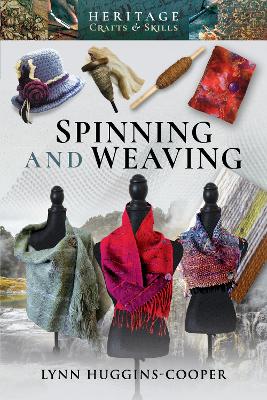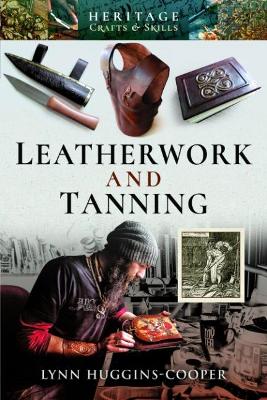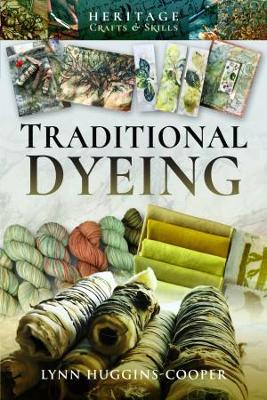Heritage Crafts and Skills
3 total works
This book offers a whistle-stop guide to the history of spinning and weaving. The story begins in prehistory when people first wove yarns to create clothing and blankets. The book explores the ways in which spinning and weaving has continued to be important throughout human history (or should that be herstory), in artistic, economic and functional terms.
The second part of the book brings us up to date, via interviews with modern day spinning and weaving artisans. These textiles artists generously allowed the author a window into their studios and discussed the way they use and adapt traditional methods, techniques and tools for the twenty first century. Photos of their work, and their working environment offers a unique view into the world of this ancient craft.
Finally, if you are inspired to try your hand at this fascinating and most ancient of crafts, the book also has a resources section. It includes a valuable list of suppliers of fibre, dyes, tools and yarn, as well as information about training courses, useful websites and more - everything you need to get started.
The second part of the book brings us up to date, via interviews with modern day spinning and weaving artisans. These textiles artists generously allowed the author a window into their studios and discussed the way they use and adapt traditional methods, techniques and tools for the twenty first century. Photos of their work, and their working environment offers a unique view into the world of this ancient craft.
Finally, if you are inspired to try your hand at this fascinating and most ancient of crafts, the book also has a resources section. It includes a valuable list of suppliers of fibre, dyes, tools and yarn, as well as information about training courses, useful websites and more - everything you need to get started.
This book offers a whistle-stop guide to the history of leathercraft and tanning. The story begins in prehistory when people discovered, perhaps by chance, that skins exposed to smoke or accidentally soaked in autumnal puddles lasted longer. Skins were a valuable resource, used for everything from clothing to shelter, blankets and vessels. The book looks at evidence that shows us how tanning and leather continued to be of prime importance across the globe throughout history, in economic as well as functional terms.
The second part of the book brings us up to date, via interviews with modern day leather crafting artisans. These leather crafters generously allowed the author access to their studios and discussed the way they use and adapt traditional methods, techniques and tools for the twenty first century. Photos of their craft, and their working environment offers a unique window into the world of leathercraft.
Finally, if you are inspired to try your hand at this fascinating and most ancient of crafts, the book also has a resources section. It includes a valuable list of suppliers of leather, dyes, tools and tanning materials, as well as information about training courses, useful websites and more-everything you need to get started.
The second part of the book brings us up to date, via interviews with modern day leather crafting artisans. These leather crafters generously allowed the author access to their studios and discussed the way they use and adapt traditional methods, techniques and tools for the twenty first century. Photos of their craft, and their working environment offers a unique window into the world of leathercraft.
Finally, if you are inspired to try your hand at this fascinating and most ancient of crafts, the book also has a resources section. It includes a valuable list of suppliers of leather, dyes, tools and tanning materials, as well as information about training courses, useful websites and more-everything you need to get started.
This book offers a whistle-stop guide to the history of dyeing. The story begins in prehistory when people discovered and used the glory of colours created by earth pigments, plants and more. We move through history from the medieval dye gardens to the horrors of chemical dyes from the Victorian era that damaged watercourses, created pollution and caused terrible sickness and untold deaths. Today, along with safe commercial dyes, modern cottage industries' are once more the leaders in the innovative use of dye plants.
The second part of the book brings us up to date, via interviews with modern day artisans. These dye workers generously allowed the author access to their studios and creative lives and discussed the way they use and adapt traditional methods, techniques and tools for the twenty-first century. Photos of their craft offers a unique window into the world of dyes.
Finally, if you are inspired to try your hand at this fascinating craft, the book has a section that explains simple eco dyeing and planning your own dye garden. It also has a resources section containing a valuable list of suppliers of plants, seeds, dyes, tools and materials, as well as information about training courses, useful websites and more - everything you need to get started!
The second part of the book brings us up to date, via interviews with modern day artisans. These dye workers generously allowed the author access to their studios and creative lives and discussed the way they use and adapt traditional methods, techniques and tools for the twenty-first century. Photos of their craft offers a unique window into the world of dyes.
Finally, if you are inspired to try your hand at this fascinating craft, the book has a section that explains simple eco dyeing and planning your own dye garden. It also has a resources section containing a valuable list of suppliers of plants, seeds, dyes, tools and materials, as well as information about training courses, useful websites and more - everything you need to get started!


